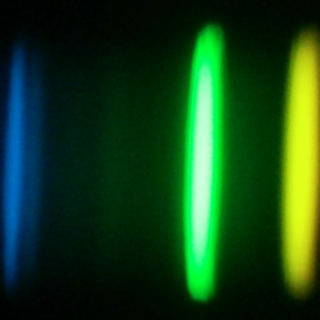Bibcode
Santos, N. C.; Cristo, E.; Demangeon, O.; Oshagh, M.; Allart, R.; Barros, S. C. C.; Borsa, F.; Bourrier, V.; Casasayas-Barris, N.; Ehrenreich, D.; Faria, J. P.; Figueira, P.; Martins, J. H. C.; Micela, G.; Pallé, E.; Sozzetti, A.; Tabernero, H. M.; Zapatero Osorio, M. R.; Pepe, F.; Cristiani, S.; Rebolo, R.; Adibekyan, V.; Allende Prieto, C.; Alibert, Y.; Bouchy, F.; Cabral, A.; Dekker, H.; Di Marcantonio, P.; D'Odorico, V.; Dumusque, X.; González Hernández, J. I.; Lavie, B.; Lo Curto, G.; Lovis, C.; Manescau, A.; Martins, C. J. A. P.; Mégevand, D.; Mehner, A.; Molaro, P.; Nunes, N. J.; Poretti, E.; Riva, M.; Sousa, S. G.; Suárez Mascareño, A.; Udry, S.
Bibliographical reference
Astronomy and Astrophysics
Advertised on:
12
2020
Journal
Citations
22
Refereed citations
21
Description
Context. The detection and characterization of exoplanet atmospheres is currently one of the main drivers pushing the development of new observing facilities. In this context, high-resolution spectrographs are proving their potential and showing that high-resolution spectroscopy will be paramount in this field.
Aims: We aim to make use of ESPRESSO high-resolution spectra, which cover two transits of HD 209458b, to probe the broadband transmission optical spectrum of the planet.
Methods: We applied the chromatic Rossiter-McLaughin method to derive the transmission spectrum of HD 209458b. We compared the results with previous HST observations and with synthetic spectra.
Results: We recover a transmission spectrum of HD 209458b similar to the one obtained with HST data. The models suggest that the observed signal can be explained by only Na, only TiO, or both Na and TiO, even though none is fully capable of explaining our observed transmission spectrum. Extra absorbers may be needed to explain the full dataset, though modeling approximations and observational errors can also be responsible for the observed mismatch.
Conclusions: Using the chromatic Rossiter-McLaughlin technique, ESPRESSO is able to provide broadband transmission spectra of exoplanets from the ground, in conjunction with space-based facilities, opening good perspectives for similar studies of other planets.
Aims: We aim to make use of ESPRESSO high-resolution spectra, which cover two transits of HD 209458b, to probe the broadband transmission optical spectrum of the planet.
Methods: We applied the chromatic Rossiter-McLaughin method to derive the transmission spectrum of HD 209458b. We compared the results with previous HST observations and with synthetic spectra.
Results: We recover a transmission spectrum of HD 209458b similar to the one obtained with HST data. The models suggest that the observed signal can be explained by only Na, only TiO, or both Na and TiO, even though none is fully capable of explaining our observed transmission spectrum. Extra absorbers may be needed to explain the full dataset, though modeling approximations and observational errors can also be responsible for the observed mismatch.
Conclusions: Using the chromatic Rossiter-McLaughlin technique, ESPRESSO is able to provide broadband transmission spectra of exoplanets from the ground, in conjunction with space-based facilities, opening good perspectives for similar studies of other planets.
Based on Guaranteed Time Observations collected at the European Southern Observatory under ESO programme 1102.C-0744 by the ESPRESSO Consortium.
Related projects

Very Low Mass Stars, Brown Dwarfs and Planets
Our goal is to study the processes that lead to the formation of low mass stars, brown dwarfs and planets and to characterize the physical properties of these objects in various evolutionary stages. Low mass stars and brown dwarfs are likely the most numerous type of objects in our Galaxy but due to their low intrinsic luminosity they are not so
Rafael
Rebolo López

Exoplanets and Astrobiology
The search for life in the universe has been driven by recent discoveries of planets around other stars (known as exoplanets), becoming one of the most active fields in modern astrophysics. The growing number of new exoplanets discovered in recent years and the recent advance on the study of their atmospheres are not only providing new valuable
Enric
Pallé Bago

Chemical Abundances in Stars
Stellar spectroscopy allows us to determine the properties and chemical compositions of stars. From this information for stars of different ages in the Milky Way, it is possible to reconstruct the chemical evolution of the Galaxy, as well as the origin of the elements heavier than boron, created mainly in stellar interiors. It is also possible to
Carlos
Allende Prieto